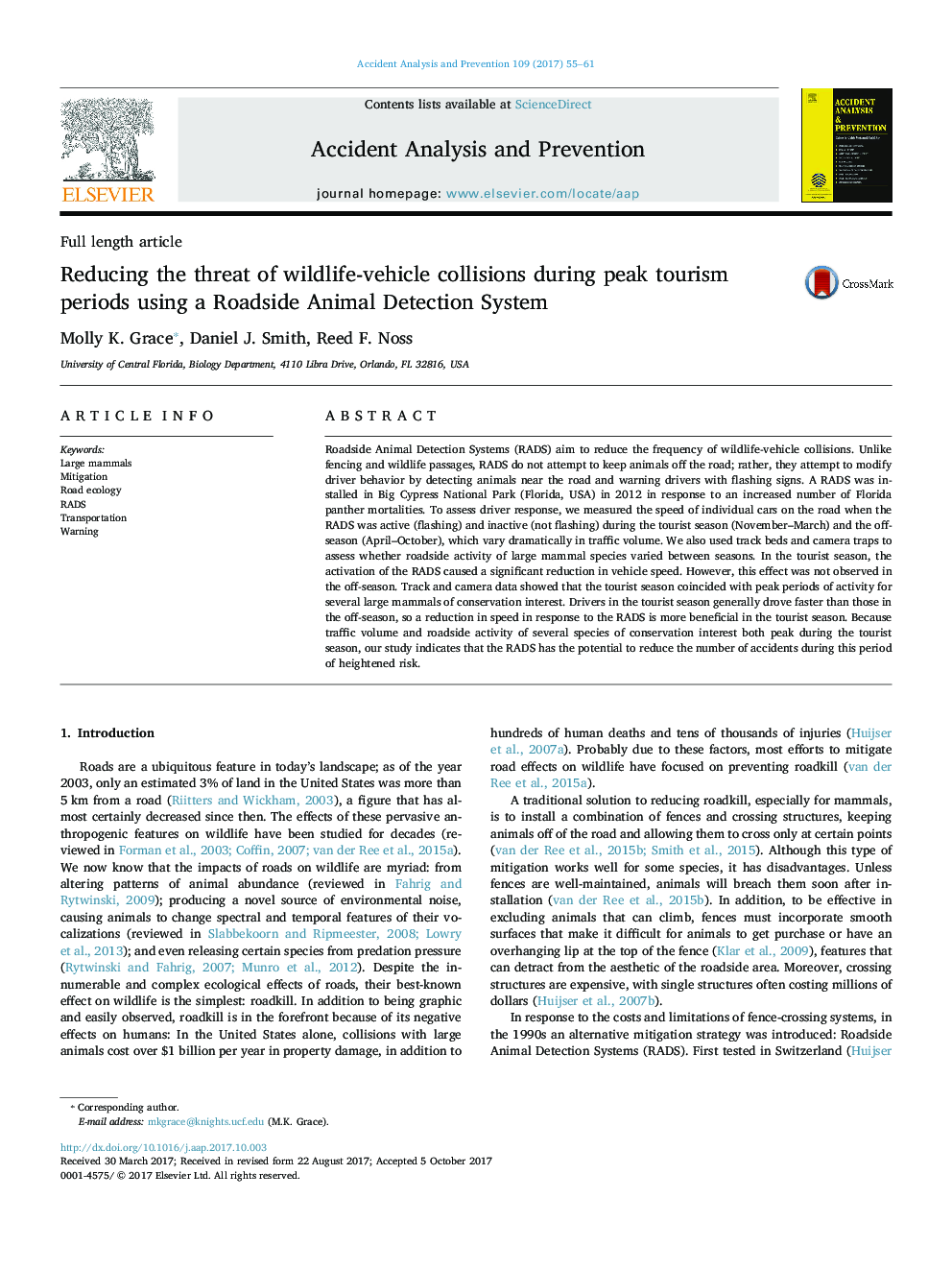| کد مقاله | کد نشریه | سال انتشار | مقاله انگلیسی | نسخه تمام متن |
|---|---|---|---|---|
| 4978491 | 1452890 | 2017 | 7 صفحه PDF | دانلود رایگان |
عنوان انگلیسی مقاله ISI
Reducing the threat of wildlife-vehicle collisions during peak tourism periods using a Roadside Animal Detection System
ترجمه فارسی عنوان
کاهش خطر ابتلا به تصادفات خودرو حیاتی وحشی در دوره های پیک گردشگری با استفاده از سیستم تشخیص حیوانات در کنار جاده ها
دانلود مقاله + سفارش ترجمه
دانلود مقاله ISI انگلیسی
رایگان برای ایرانیان
کلمات کلیدی
موضوعات مرتبط
مهندسی و علوم پایه
مهندسی شیمی
بهداشت و امنیت شیمی
چکیده انگلیسی
Roadside Animal Detection Systems (RADS) aim to reduce the frequency of wildlife-vehicle collisions. Unlike fencing and wildlife passages, RADS do not attempt to keep animals off the road; rather, they attempt to modify driver behavior by detecting animals near the road and warning drivers with flashing signs. A RADS was installed in Big Cypress National Park (Florida, USA) in 2012 in response to an increased number of Florida panther mortalities. To assess driver response, we measured the speed of individual cars on the road when the RADS was active (flashing) and inactive (not flashing) during the tourist season (November-March) and the off-season (April-October), which vary dramatically in traffic volume. We also used track beds and camera traps to assess whether roadside activity of large mammal species varied between seasons. In the tourist season, the activation of the RADS caused a significant reduction in vehicle speed. However, this effect was not observed in the off-season. Track and camera data showed that the tourist season coincided with peak periods of activity for several large mammals of conservation interest. Drivers in the tourist season generally drove faster than those in the off-season, so a reduction in speed in response to the RADS is more beneficial in the tourist season. Because traffic volume and roadside activity of several species of conservation interest both peak during the tourist season, our study indicates that the RADS has the potential to reduce the number of accidents during this period of heightened risk.
ناشر
Database: Elsevier - ScienceDirect (ساینس دایرکت)
Journal: Accident Analysis & Prevention - Volume 109, December 2017, Pages 55-61
Journal: Accident Analysis & Prevention - Volume 109, December 2017, Pages 55-61
نویسندگان
Molly K. Grace, Daniel J. Smith, Reed F. Noss,
